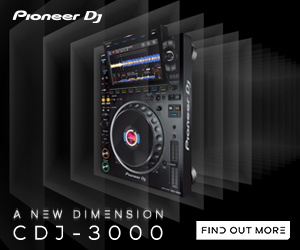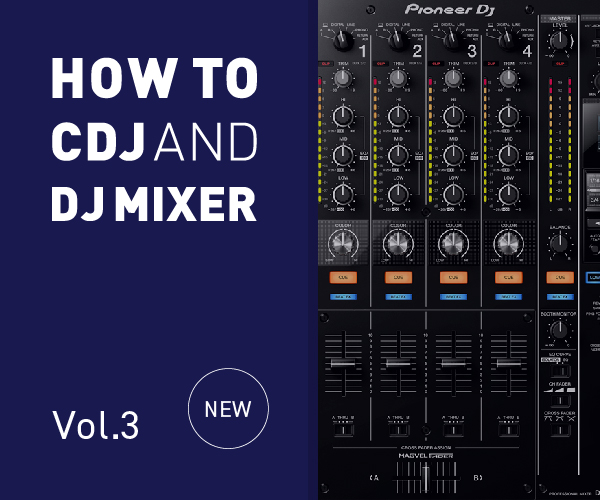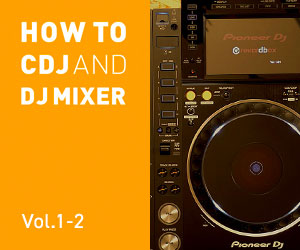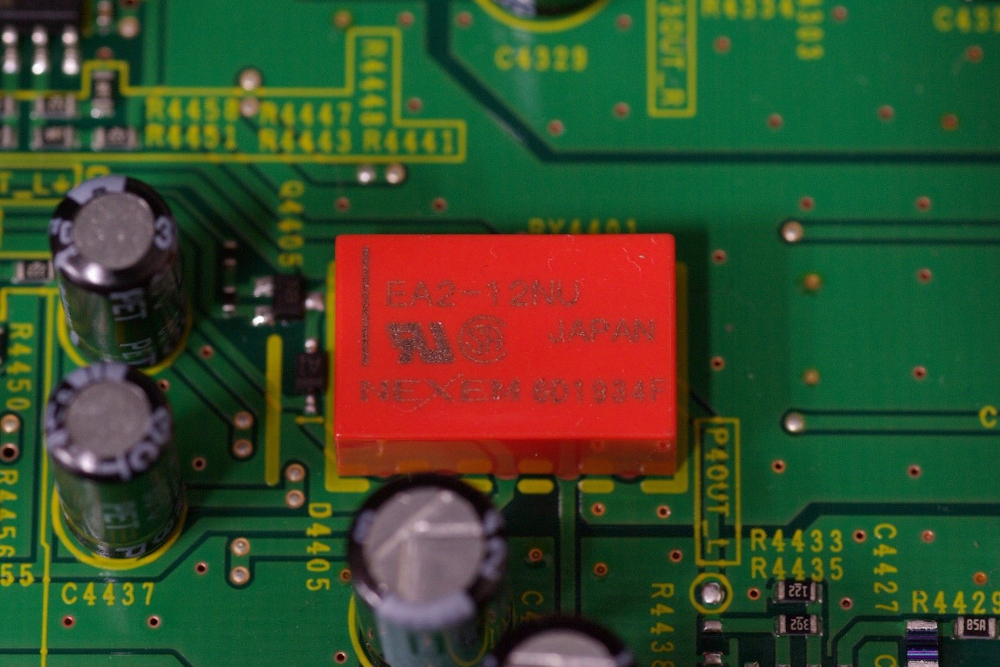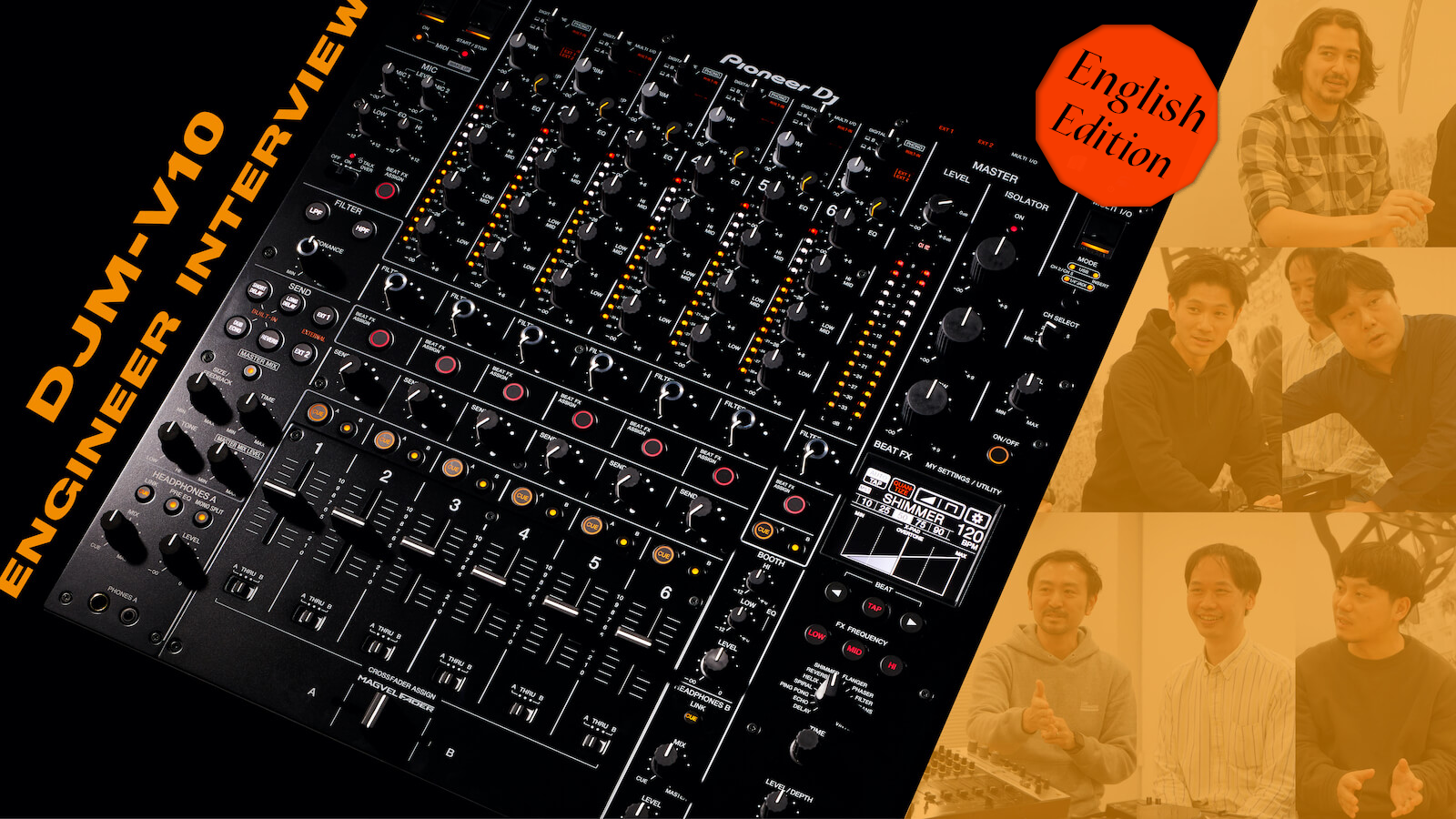
Highlight
Pioneer DJ “DJM-V10” Engineer Interview
Text & Interview : Hiromi MatsubaraPhoto : Shotaro Miyajima
2021.6.16
The sound quality with detailed tuning, fascinates engineers across the globe
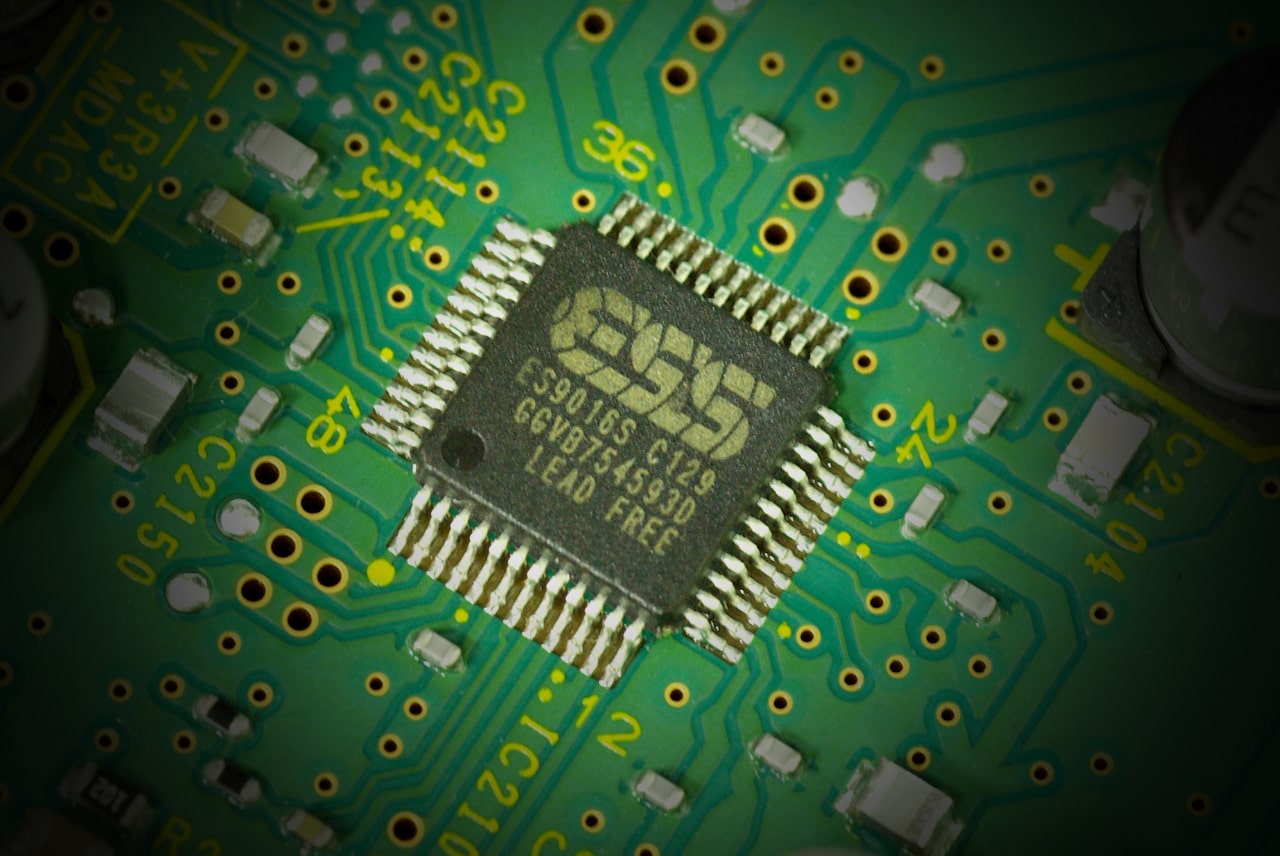
32-bit D/A converter by ESS Technology, Inc.
Now let’s focus on its specs. The sound quality would be no.1 thing to separate DJM-V10 from DJM-900NXS2 as a new breed of mixer. To start off, what’s the characteristics and advantages of the newly equipped D/A [Digital/Analog] converter chip?
Hamada: We adopted a converter chip “ES9016” from ESS Technology, Inc for Master Output in DJM-V10. High resolution, low noise and low distortion, this is from a well-known IC chip manufacturer among audio enthusiasts for their “high resolution sounds quality”.
DJM-TOUR1 and CDJ-TOUR1 also have D/A converters from ESS Technology, Inc., and its high-res yet warm sound quality has been received favorable reputations from inside and outside [of our company]. So, we decided to select a IC chip from the same manufacturer this time again.
You often describe sound quality being “warm”, but what is the difference from other types of sounds, or how does this kind of sound make you feel?
Hamada: In an extreme sense, the opposite of “warm sound” would be “cool/clear sound”. When a sound is cool/clear, on one hand you get calm and crisp sound, but on the other hand you have harsh middle/high range, causing ear-fatigue when listened for a long time with high volume. Oppositely, when a sound quality is too warm, while you can enjoy listening to mild sounds without stress, it also loses sharpness and contrasts, resulting in flabby sound. DJM-900NXS2 has more of a clear sound quality, but from there, we challenged ourselves to achieve a warmer sound quality for DJM-V10.
I see. Then, how did you decide your general direction for the aimed sound quality?
Hamada: We started by making our “sound quality mapping” to define our aimed sound quality easier for third parties, by positioning sounds tendencies of other brands’ and our mixers in a four-quadrant matrix; a horizontal axis being “warm ⇔ cool/clear”, a vertical axis being “stereo/resolution ⇔ monaural/dense/solid”. After series of test auditions of our/other companies’ mixers, we realized that mixers were so widely distributed in the 4-quadrant. For example, DJM-900NXS2 positions in a “clear and high-res area”, and most of analog mixers with high reputations for their sounds quality tend to be in a “warm and monaural area”. We all agreed to place DJM-V10 on warmer direction for a horizontal axis, but we’ve been deciding where it should go vertically. We carefully considered this part as we built its sounds.
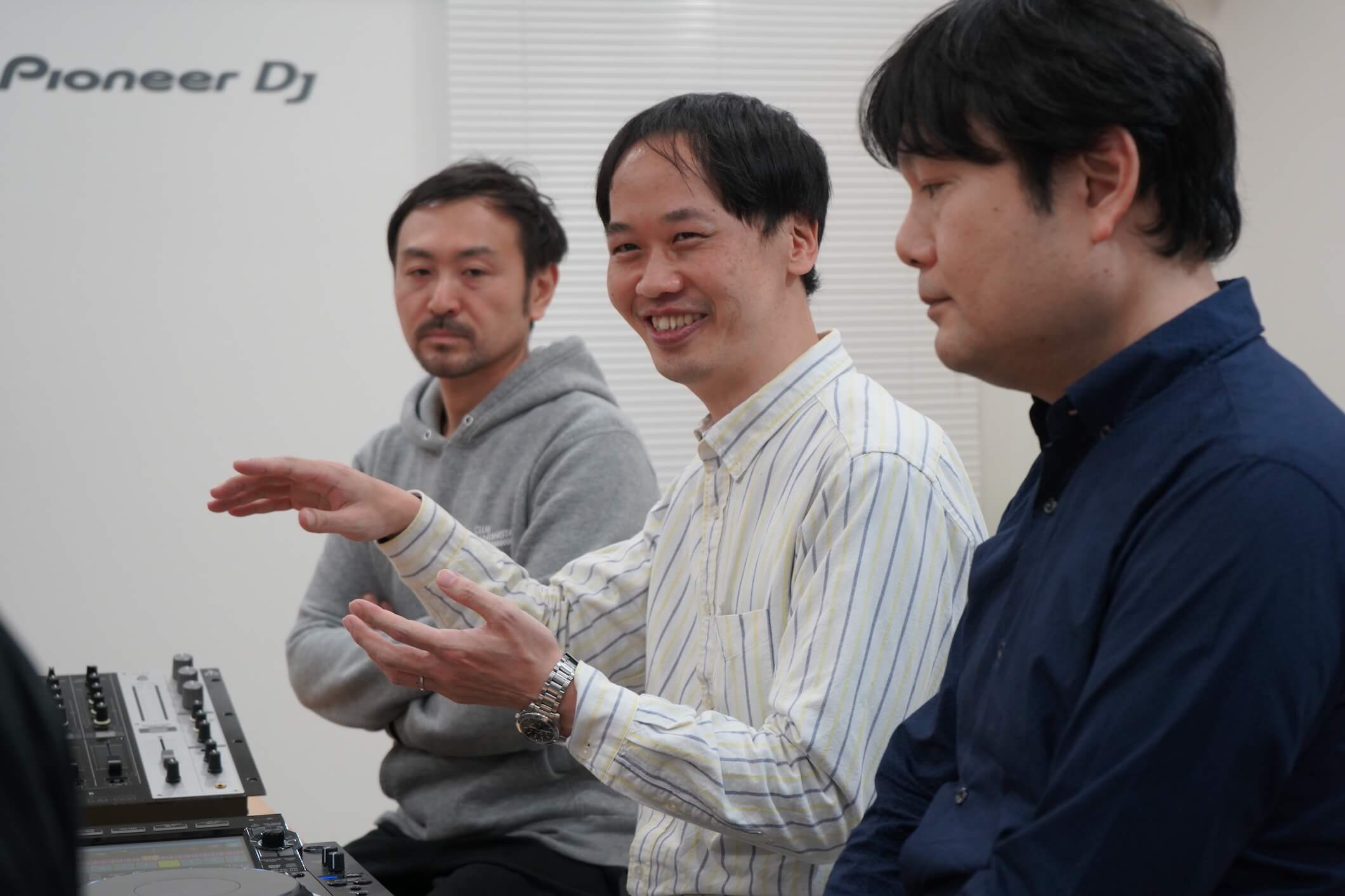
Norifumi Hamada – Engineering Management Department, Mixer Design Department, Mixer Section
Guessing form what you’ve said, as for a vertical axis, DJM-V10 can be positioned a bit toward high-res end?
Hamada: Yes, that’s right. We defined the center of the mapping as “neutral”, which means “tracks can deliver correctly without any problems” if I put it nicely, but also can mean “bland without anything unique”.
At one point of DJM-V10 development, we did consider a neutral sound too. But thinking that our mixers like DJM-900NXS2 or DJM-TOUR1 have gotten great reviews for their high-res sounds qualities, we figured out that keeping those highly evaluated parts would be the best. That’s why we went for a sound quality with emphasis on high-res.
For the horizontal axis, if it’s too much toward the center, a resulting sound would be boring and bland, neither warm nor clear. Of course, we kept certain neutrality to accurately reproduce original sounds, yet we tailored its sound with appropriate amount of warmth, roundness and softness: because after all, we believe what’s the most important for a mixer’s sound quality is, to entertain the audiences. On top, we’re satisfied with its sound quality matching to the design. It would’ve been confusing if a design is based on warmer tones but a sound is piercing and crispy.
That means, you had decided the design before [the sound quality], in a chronological order?
Kuramoto: We can say the design influenced [our decision on sound quality]. In terms of scheduling, an exterior design comes first.
That being said, I assume what Hamada meant was that, we’ve consolidated the sound quality portion while taking into consideration both the design, and the other initial orders. To sum, we didn’t decide our sound quality direction solely based on the design, but rather we proceeded the development upon our team’s shared vision from the beginning: “warm sound”. Surely there’s been time-lags in the manufacturing.
processes though.
Hamada: Right, it’s not that the design came absolute prior.
Kuramoto: Initial direction making is the most important for the designing team too. Until the product concept was clearly set, we’ve also used the mapping Hamada mentioned earlier. We’ve discussed [in the team] things like: “DJM-900NXS2 was cool and digital-ish direction, and compared to that, what should we do this time?”, then gradually visualized those ideas until we are satisfied with the result.
To sum, basically everyone was following the same goal.
Montpetit: To conclude briefly, that’s it.
[everyone laughs]
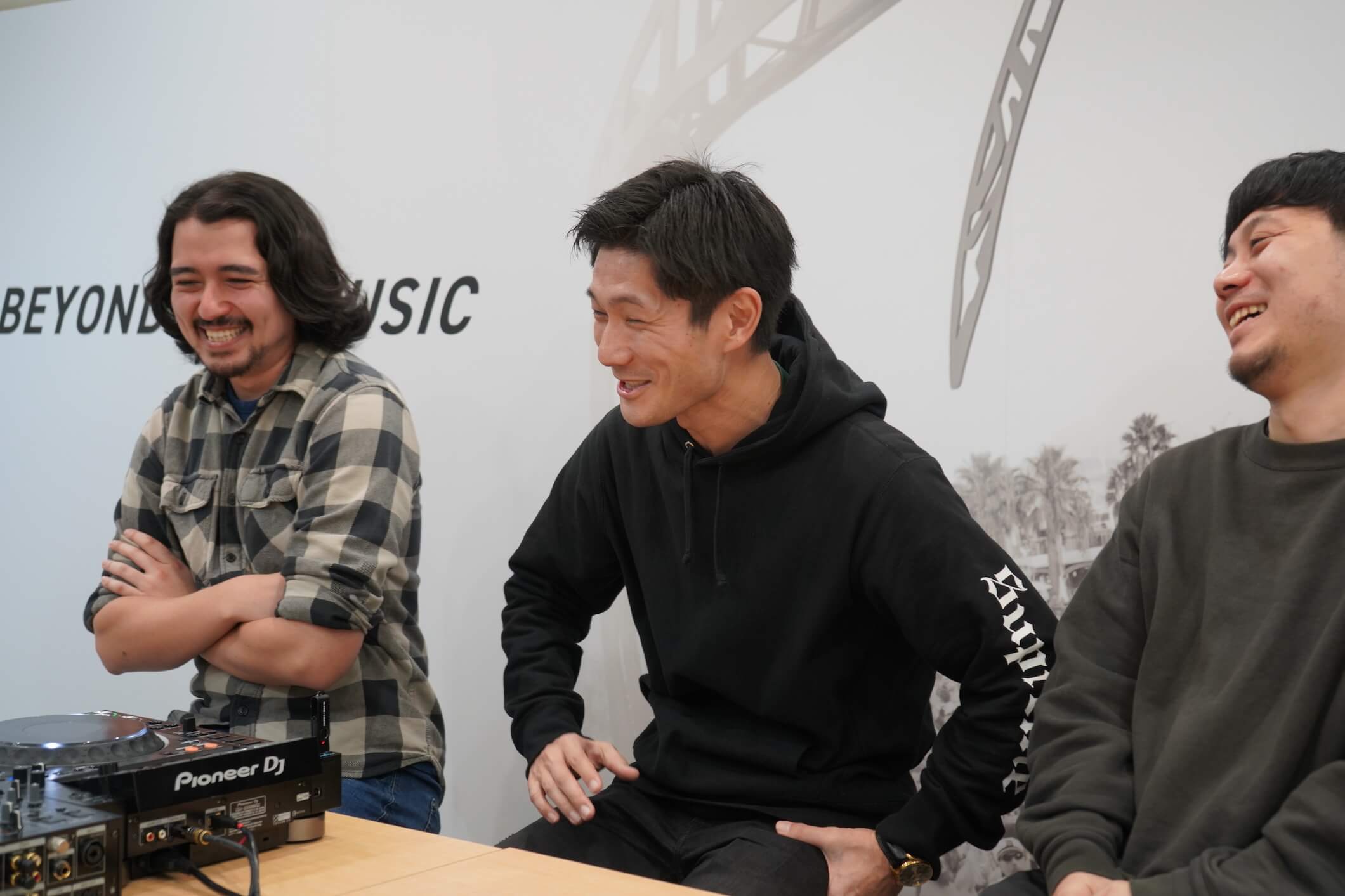
Kuramoto: Usually, there’s not much interaction between the sound quality team and the designing team, so I’d almost never talked with Hamada before. When I was about to finish my designing task, I passed in front of an audition room as I was leaving the office, then I saw him standing still there. Or, when I heard heavy bass sounds one night, wondering that’s a track by Floating Point, and that was him again, comparing and auditioning sounds all night long. At that point I thought to myself: “he’s a real craftsman”.
Hamada: Yeah, sounds always end up leaking outside [the room] because I listen to [tracks] with quite a volume [laugh]
Kuramoto: As I often work near the audition room, I’ve always been like: “he must be doing something there… and he’s got a great taste in music”. [laugh]
Montpetit: One time I gave Hamada my selection of hard EDM tracks, which were completely different from what [he] usually uses for referencing. That was to research sounds quality without ear-fatigue, but then, when I realized, other engineers were using those tracks. [laugh]
Hamada: Since us, a sound quality team, repeat the process of changing parts and auditioning over and over, we tend to use several specific tracks with well-balanced different frequencies to make the checking process more efficient. But this time, we auditioned with much diverse tracks regardless of genres, in total of about 80 tracks. When we visited a club for an on-site sound quality check, we even tried Enka once, which an engineer was using for confirmation.
Toward the end, it was more like a spot the difference game…while listening to various genres’ tracks, we continued asking ourselves: “aren’t we losing intentions of the original tracks?” or “is there anything doesn’t feel correct?” non-stop.
Kuramoto: Wow…you’re seriously a craftsman.
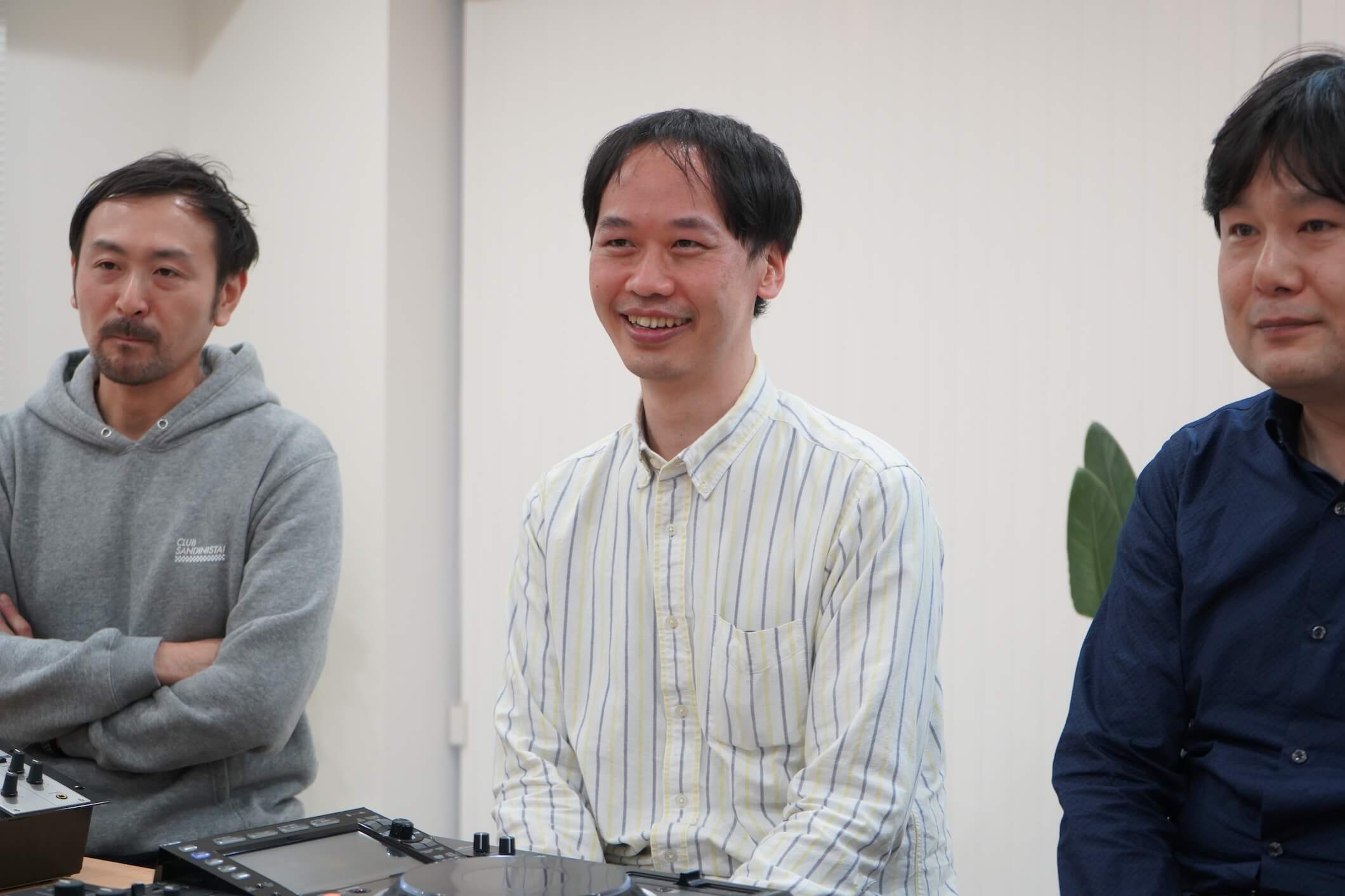
Montpetit: You’ve done quite insane amount [of auditions] even only for changing parts, haven’t you?
Hamada: As far as I remember I’ve done it about 300 times, then I repeatedly listened about 3-4 times before and after changing parts to confirm effects, so in total I auditioned at least 1000 times. Not only D/A converters but also for the other analog circuit parts, we’ve newly adopted those with great sound performances, after conducting sound quality evaluations for different components from different manufacturers. You probably often see a picture with a huge D/A converter in the center for our product promotion, and that’s because this part is more aesthetic compared to the other parts… in my opinion, a sound quality decided by a D/A converter itself can be no bigger than 20% of the whole.
What I mean here is, no matter how great a D/A converter is, your final sound can be completely different depending on each manufacturer’s and product’s design philosophies or tunings. Or potentially, it can result in worse sounds than other products with lower spec D/A converters. To engineer DJM-V10 this time, we ordered about 20 different types of condensers for the analog circuit for example, repeated the process of changing parts and auditioning, and carefully selected the one among them, whose sound suited DJM-V10 the most. In this way, we completed our sound tuning with the care into every detail.
Left: AK5578EN / AK5574EN by AKM is adopted for each channel’s analog input
Right: mechanical relay (EA2 relay) by EM Devices Corporation is adopted for LINE / PHONE input switch, Master output and headphone output’s muting circuit
Do you also evaluate changes and differences in sound qualities with data, or by any other ways than your own ears?
Hamada: If a sound is obviously too noisy or distorted, you can correctly evaluate them with measuring instruments. But whether a sound quality is good or bad is intuitive, making it harder to judge by data as audio performances. As audio performance indicators, we have SNR (S/N, Signal-Noise Ratio), THD (Total Harmonic Distortion) or Frequency Characteristics for example. But in reality, you can get good sound quality when S/N or THD show bad results, or oppositely, you can hear noisy sound when S/N indicates good figure. In brief, we measure basic performances with measuring instruments, but to finalize a sound quality, we must rely on our own ears.
As we made our sound quality mapping at the early stage of the product development, and proceeded the development while sharing our direction for DJM-V10 with people inside and outside of the company, we managed to create the product as intended initially, without a major reworking.
Also, Montpetit brought an appropriately tuned prototype setup to his overseas business trip, and conducted sound quality evaluations in local clubs in the development early stage. Apparently, it received very good opinions, which helped us a lot for our sound quality tunings afterwards.
Montpetit: People were fascinated [by the sound quality]. At long-established clubs in Ibiza like Pacha and DC-10, PAs there were even asking me: “is this really a digital mixer?”
When I carried out a test audition in Pacha, engineers were listening from a floor with stiff faces at first, then their expressions started to change as they kept listening, finally ran towards me with full smiles, saying “congratulations!” with sudden handshakes. [laugh]
I was wondering what’s going on, then they told me: “it’s a great sound quality”, which made me feel that all those Hamada’s efforts finally paid off.
Koizumi: Things went similarly during my business trip to New York. I tried out test auditions in 6 clubs, and every time it was a huge success. I even got comments like: “this is the best of all the other mixers from Pioneer DJ” …we’ve got nothing but good reviews.
Currently, how many people are in charge of sound quality evaluations?
Hamada: A sound quality team of each product check it daily of course. On top, we have 9 “sound quality check authorizers”, who judge if a [product’s] sound quality meets aimed criteria from a third-party perspective, on each development step checkpoint. We invite 3 authorizers for a checkpoint, and only if more than 2 of them approve, we can go ahead to a next step.
Since each authorizer has different taste in sound quality, sometimes opinions can split among participants. But for the final evaluation before the mass production [of DJM-V10], fortunately we got high ratings by all the authorizers. A setup Montpetit brought for overseas evaluations had a bit lower resolution and a bit toward warmer tuning than the final product, but we’re confident that those people liked it during overseas evaluations will surely be satisfied too.
Montpetit: One thing I noticed while talking with PAs overseas was, they tend to separate sound “character” and sound “quality”, which we only have one word in Japanese (onshitsu). You can simply judge a sound quality by low-noise, high-res or things like that. But a sound character isn’t just about good or bad. After clearly deciding “what kind of character you want the mixer to have”, you can evaluate it based on “how well you achieved that goal”. In this sense, I’m happy to say that DJM-V10 has the exact character as we intended.
Next page:【 4-band EQ to layer sounds with multiple channels, Master Isolator to satisfy you with natural mixing 】




